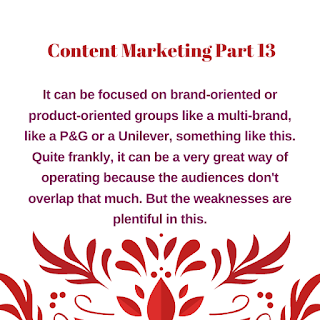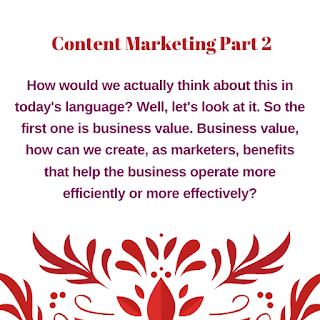Actually Stand Up a Content Marketing Property || Content Marketing Part 14
Or, we've got the managing editors themselves. Now, these are people who can hold people to task. These are the people who manage the properties themselves, the online media product. These are usually people with journalism backgrounds who understand the project management, the workflow, and the capabilities that are needed to actually stand up a content marketing property. We have an amazing one in Michele Lin who is our VP of content, who manages all of the things related to our blog.
It has her team really working to make sure that our content sings in managing all the different content contributors who actually contribute to our blog. Also, we have content producers-- the people who make it beautiful. Now in many cases, this might be an outsourced agency for you. It may be an in-house team. It may be some combination of the above. But a producer who can actually make and align things that are beautiful-- the white paper, the infographics, the video, the photography. Then we've got chief listening officers. We think this is an important piece of a content marketing team.
And quite frankly, we're starting to see it more in media companies. Not only someone who can actually manage the social channels, but who can manage the strategy of the emerging social channels. In other words, what should we be doing on WhatsApp or what should we be doing on Snapchat or Twitter or LinkedIn or Facebook, and developing partnerships, strategies, and abilities for us to manage the social conversation in a way that helps direct content throughout the enterprise. I like to think of these folks as the air traffic controllers.
They're not necessarily answering the question, but they're making sure that the conversation or the question gets directed to the right part of the organization. And then finally, and you'll see that we've disconnected this piece, actually, is the content creators themselves. Because these may be C level people, they may be managing people, they may be influencers, they may be freelancers, they may be journalists. These are the people that are creating the raw content that flows into our organization and actually helps us develop a core strategy for content production, helping us reduce the amount of content we're creating and reuse it, repackage it, re- synthesize it in a meaningful way.
So where do we start with this? Find those pockets of excellence because those people will be your key people who can fill some of these roles.
Somebody is doing this well in your company already. Maybe somebody is a great social person, maybe somebody is great with the email newsletter. Find these pockets of excellence and build upon them in your roles. And build one house, one street, one neighborhood at a time. Ultimately this group, this team, has a remit. And it's very focused.





















